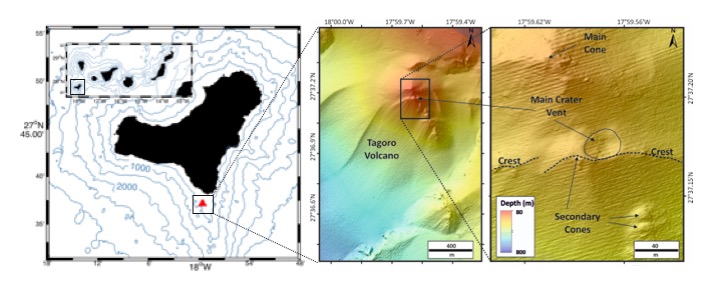Ph.D. Program in Oceanography and Global Change at the Canary Islands, Spain
The submarine volcano Tagoro, which erupted south of El Hierro island in October 2011, still remains active in a degassing stage. Its eruptive process has evolved over the last years into a low-temperature hydrothermal system with diffusive emission of heat, gases, metals, bioavailable iron, and inorganic nutrients. These emissions, which exhibit a stationary cyclic behavior, produce important physical-chemical anomalies localized over the main and secondary craters. The location of Tagoro volcano, 1.8 km from shore and with a depth of the main crater of 127 m, provides a unique opportunity for the monitoring of a shallow hydrothermal system, which have been scarcely studied in comparison to those in deep settings. We intend to characterize the current state of the volcanic activity through a multidisciplinary approach concerning physical, chemical, and biological aspects, including: (i) a study of the emission of inorganic nutrients during both the eruptive and degassing stages from a seven-year time series of nutrient data; (ii) an analysis of the heat flow associated to the volcanic activity of the degassing stage; and (iii) a study of the impact of the hydrothermal emissions on the biological productivity of the area. This study will provide a better understanding of the processes taking place in the only active submarine volcano in the Spanish territory.




